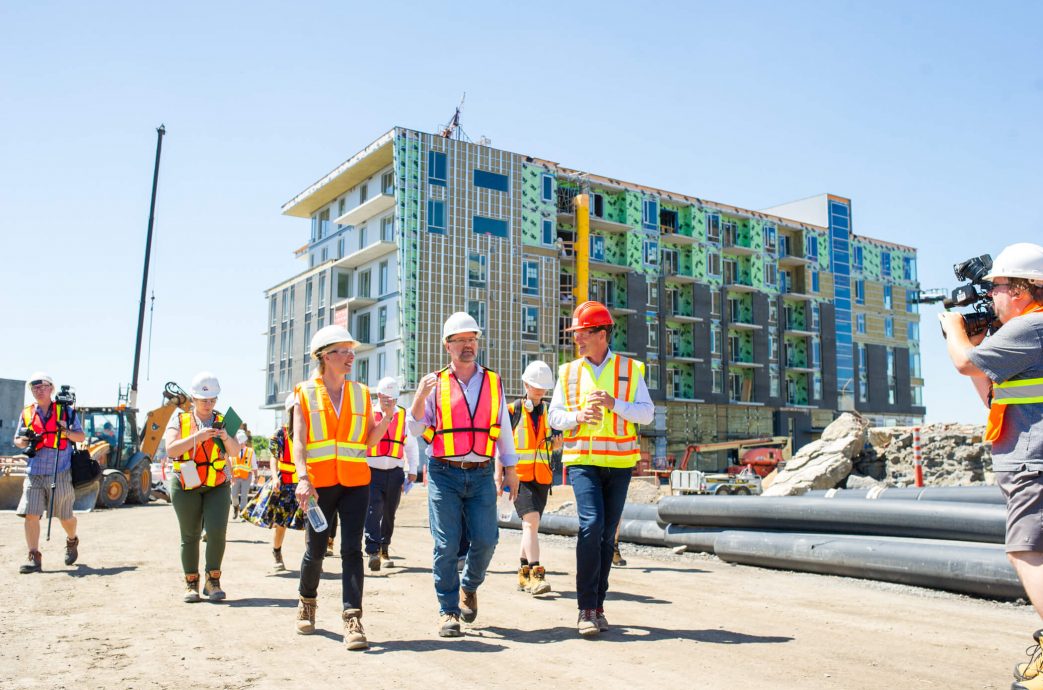By Doug Fischer, Canadian Geographic – Published on: April 6, 2016
Across Canada, there are old buildings finding new life through modern transformations. But such metamorphoses are complicated. Indeed, for the past three decades, Stratford, Ont. has struggled to decide on what to do with the giant, neglected railway repair shop that sits on the edge of downtown (read my story about it in the April issue of Canadian Geographic, and see photos here).
Maybe Stratford’s more passionate residents would benefit from a chat with Jeff Westeinde. He’s the force behind Zibi, an ambitious plan to develop 15 hectares of historic land on two islands and along the shorelines of the Ottawa River on the Ontario-Quebec border between Ottawa and Gatineau.
Almost from its inception as an idea in 2013, Zibi (the Algonquin word for river) has overcome long odds. Conceived to be one of the most sustainable developments in the world, Zibi came together in less than two years — an achievement for any project, but remarkable for one that required the harnessing of views from two municipalities, two provinces, the federal National Capital Commission and numerous Algonquin communities for whom the site represents sacred land going back nearly 1,000 years.
“It was unanimous among our peers in the development industry that we were out of our minds, that there was no possible way this would ever see the light of day,” Westeinde, the executive chairman and co-founder of Windmill Developments Group, told me. “Yet, here we are.”
Site preparation is already well underway, and work will move into high gear this spring. The project, scheduled to be finished over the next 10 to 15 years, calls for the retrofitting and repurposing of historic lumber industry-era buildings in both Ottawa and Gatineau, the construction of new residences and retail and commercial outlets, all to be connected by a network of trails, bike paths and public transit routes. And all within view of Parliament Hill.
One-quarter of the site will be greenspace and parkland, much of it along the river, including by the Chaudiere Falls. The falls, Ottawa’s biggest tourist attraction in the late 1800s and a sacred First Nations site for close to 1,000 years, were dammed in 1908 to produce hydro-electricity and blocked from public sight. The Zibi project will restore them to view, and become the centrepiece of the $1.2-billion development.
In an odd way, says Westeinde, getting the public to embrace a project virtually no one thought was possible was actually the catalyst that pushed the project forward.
“We thought our job, quite simply, was to take the views of everybody else and turn them into a viable plan that would work for everyone,” Westeinde says. “That always starts with the community and works its way up.”
He says Windmill knew in general what it wanted — to be one of 10 One Planet communities in the world (a designation that recognizes both environmental and cultural sustainability, in this case Windmill’s engagement with the aboriginal community). Beyond that, Windmill knew only that it needed the project to make sense financially.
So it called a public meeting to find out what citizens wanted. More than 900 people showed up at that first meeting, many of them disappointed there were no fancy diagrams or scaled models to look over. In fact, there was nothing.
“If we heard criticism that night it was, ‘Why isn’t there anything for us to see? We expected to see plans.’ We told them that we wanted their thinking about what should be in our plans,” Westeinde says.
The meeting led to a consensus on how to measure success through two broad objectives: to build a project that was world class, and to regularly publish “report cards” grading the level of contribution of all the project’s participants: municipalities, provinces, regulatory agencies, planning bodies, the developer.
According to Westeinde, the work done at that first meeting, besides signalling the company’s willingness to listen to the community, “gave us a bit of a moral high ground to work through some of the tough issues.”
Within two years, most of those obstacles had been swept aside and the project had secured its many approvals and financing. There are still issues to be resolved — the Algonquin communities are themselves divided about whether the development is appropriate for a site of such cultural importance — but barring some unforeseen disaster, and given Windmill’s solid track record, Zibi is likely to be one of the capital’s must-see destinations within a few years.
The lessons learned through Zibi can provide a guide for Stratford, even if the communities and situations are different.
“Developers have lots of choices when it comes to these kinds of projects, all through southwestern Ontario and into the states,” he says. “So the developer has to feel like the community wants his project, wants to buy into the vision — a shared vision, of course — but one that is viable and practical.”








